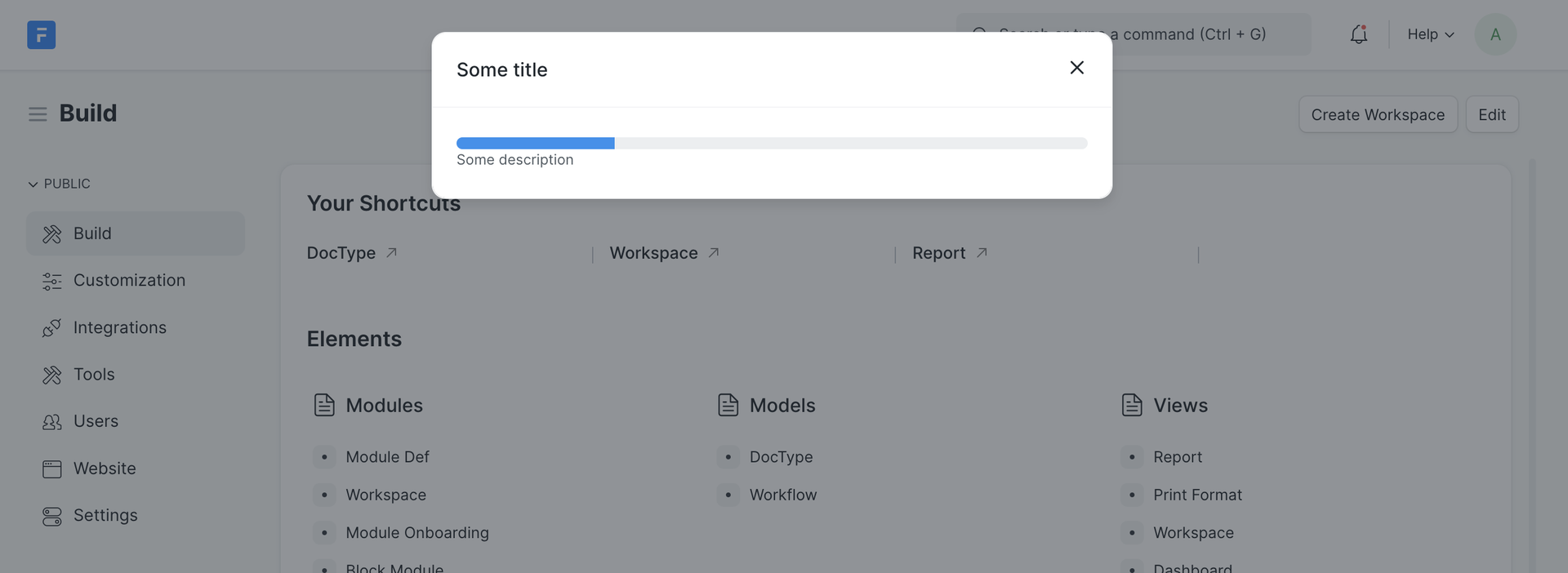Realtime (socket.io)
Frappe ships with an API for realtime events based on socket.io . Since socket.io needs a Node server to run, we run a Node process in parallel to the main web server.
frappe.realtime.on
To listen to realtime events on the client (browser), you can use the
frappe.realtime.on
method:
frappe.realtime.on('event_name', (data) => {
console.log(data)
})
frappe.realtime.off
Stop listening to an event you have subscribed to:
frappe.realtime.off('event_name')
frappe.publish_realtime
To publish a realtime event from the server, you can use the
frappe.publish_realtime
method:
frappe.publish_realtime('event_name', data={'key': 'value'})
frappe.publish_progress
You can use this method to show a progress bar in a dialog:
frappe.publish_progress(25, title='Some title', description='Some description')
